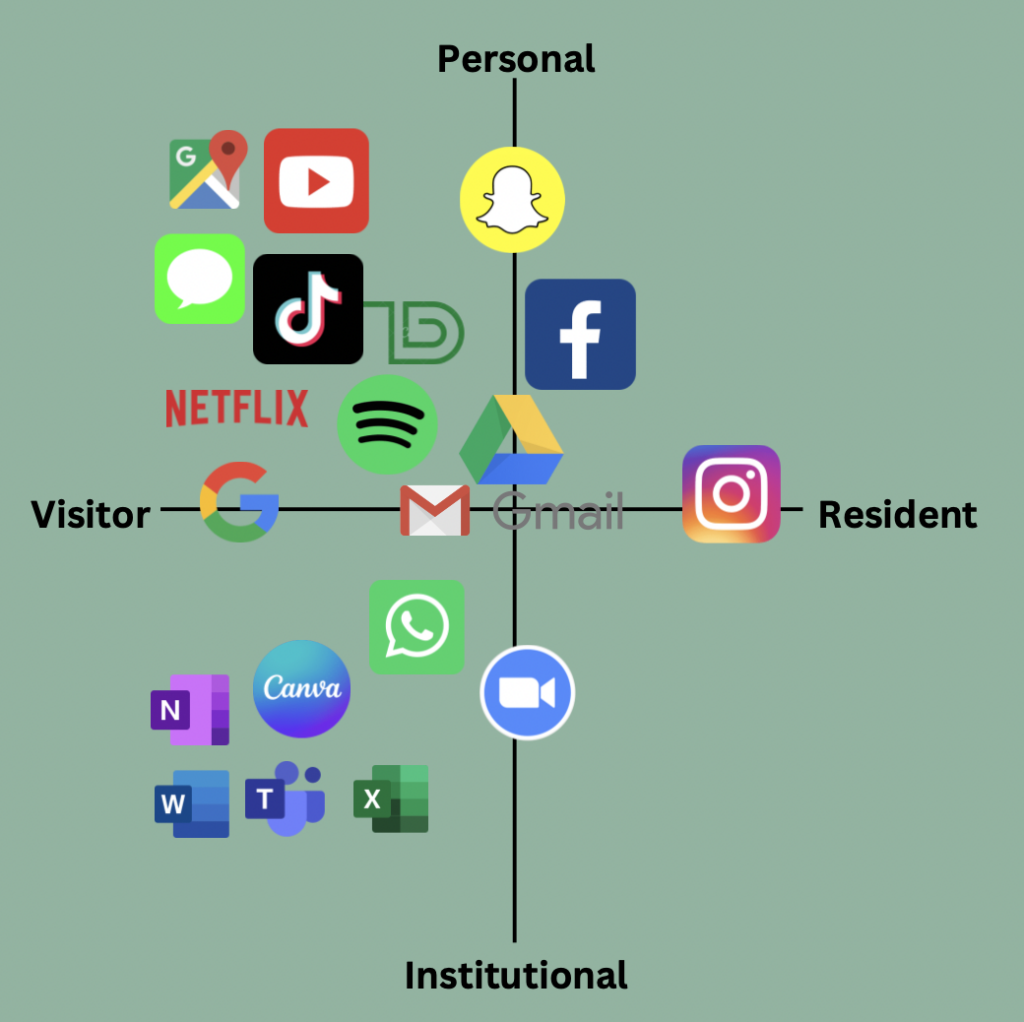
What digital platforms are students currently using to develop their professional network?
Whether it is professional, academic or personal use, students utilize networked publics to enhance communication among professionals thus improving collaboration, development and education. According to George et al. (2013), Facebook, Twitter, LinkedIn, and ResearchGate are among the few social media apps utilized for professional networking among medical students. In particular, LinkedIn is a great resource for displaying a professional image and building connection with employers as well as professionals within one’s field of interest (Anders, 2018). Nonetheless, many students deter from the using it as they believe their current skill sets don’t live up to expectations. This is a barrier as it prevents many students from networking.
What could the student consider in expanding their professional learning network?
- Creating an E-profile– improves visibility to employers, show off academic, personal and professional accomplishments, connect to people on a global scale (Bradshaw, n.d.).
- Goals– what is the student hoping to accomplish through the use of a PLN? This helps the individual select what social media platform they should use. For example, for information sharing twitter, wordpress or reddit are optimal choices. (Boyd, 2012; Bradshaw, n.d.).
- Privacy Breach– information can be easily network, placing info online can put people at risk of scams, phishing, and online harassment (Bradshaw, n.d.).
How do data privacy and security limit and/or promote a PLN?
| Limit | Promote |
|---|---|
| Information Privacy– information can be collected, utilized, networked by companies. Scams, frauds, phishing, identity theft are all possibilities when placing personal information online (Regan and Jesse, 2018; Bradshaw, n.d.) | Create opportunities– allows person to reach a larger employer audience via networked public (ie. LinkedIn, Twitter, Facebook) (Bradshaw, n.d.). . |
| Surveillance– companies can monitor people’s actions across sites to cater advertisements. This can be beneficial to some but the lack of control over what certain social media sites have access to can be concerning (Regan and Jesse, 2018) | Control on how you want to network yourself– can cater profile according to what you’d like to portray to your audience. What you don’t share online is just as important as what you do. Once you post something about yourself it’s hard to make it private again (Bradshaw, n.d.). |
In your network how can you create a digital identity/ reputation?
I would personally use LinkedIn as starting point in building connections and highlighting my strengths online. With confidence, I could consider interacting with professionals on a public network like twitter by reposting or providing input of certain topics. Nonetheless, I’ve always been conscious of what I post online not only for privacy reasons but also because I’m aware in a world with such advanced technological advances, public image is just as important as an impressive resume.
How did pivots to work-from-home during the COVID-19 pandemic change how we should consider our social media connectivity and professional balance?

- Social Interaction– it helped people stay connected during a time of social isolation. Brought greater connect in professional, academic and personal lives.
However, there was a
- Lack of Work-Life Balance– social media allows people to bring work home this can interfere with how someone separates their personal and work life.
Personally, as a student, doing online-schooling for 1.5 years took a toll on my mental well-being. Since I didn’t have to leave my home to attend classes, my personal and academic life began to merge. I found it difficult to separate time for loved ones from studying. Having lectures recorded made me feel the need to constantly perfect my notes which is a main reason why I felt like I didn’t have time to spend on other things.
V and R Map
A V&R map is a visual representation of an individual’s interaction and engagement with networked publics. It can be broken down into 4 distinct categories illustrated along a continuum (White & Le Cornu, 2011).
Along the X-axis is Visitor vs Resident
- Visitor- typically anonymous and leaves no social trace.
- Resident- leaves a social trace. Has a social presence and uses social media to communicate with others
The Y- axis contains Personal vs Institutional
- Personal- used for personal reasons (ie. entertainment, curiosity)
- Institutional- used for other reasons (ie. school, work)

References
Anders, A. D. (2018). Networked learning with professionals boosts students’ self-efficacy for social networking and professional development. Computers and Education, 127, 13–29. https://doi.org/10.1016/j.compedu.2018.08.009
Bradshaw, R. (n.d.). Managing Your Online Profile. https://digitaltattoo.ubc.ca/tutorials/privacy-and-surveillance/online-presence/managing-your-online-profile/
Boyd, D. (2012). Networked Privacy. Vol. 10 No. 3/4 (2012): Open Issue. https://doi.org/10.24908/ss.v10i3/4.4529
George, D. R., Roviniak, L. S., & Kraschnewski, J. L. (2013). Dangers and Opportunities for Social Media in Medicine. Clinical Obstetrics and Gynecology, 56(3), 453–462. https://doi.org/10.1097/GRF.0b013e318297dc38
Regan, P. M., & Jesse, J. (2018). Ethical challenges of edtech, big data and personalized learning: twenty-first century student sorting and tracking. Ethics and Information Technology, 21(3), 167–179. https://doi.org/10.1007/s10676-018-9492-2
White, D.S., & Le Cornu, A. (2011). Visitors and residents: a new typology for online engagement. First Monday, 16. https://firstmonday.org/ojs/index.php/fm/article/view/3171/3049